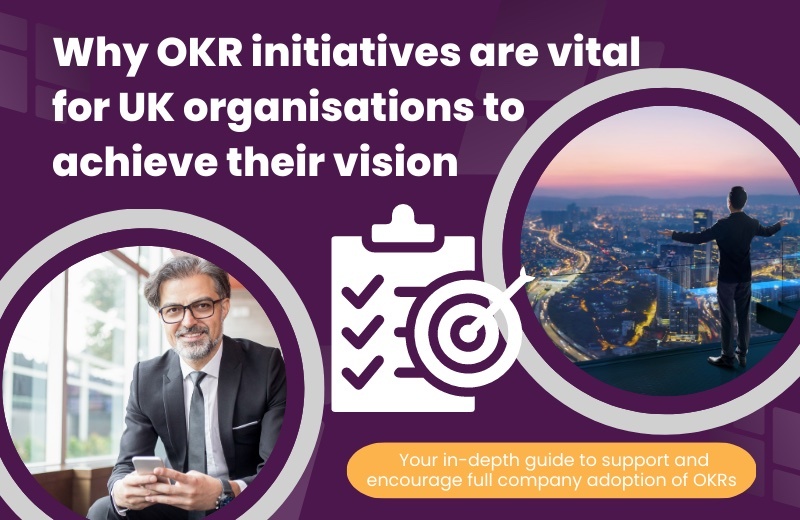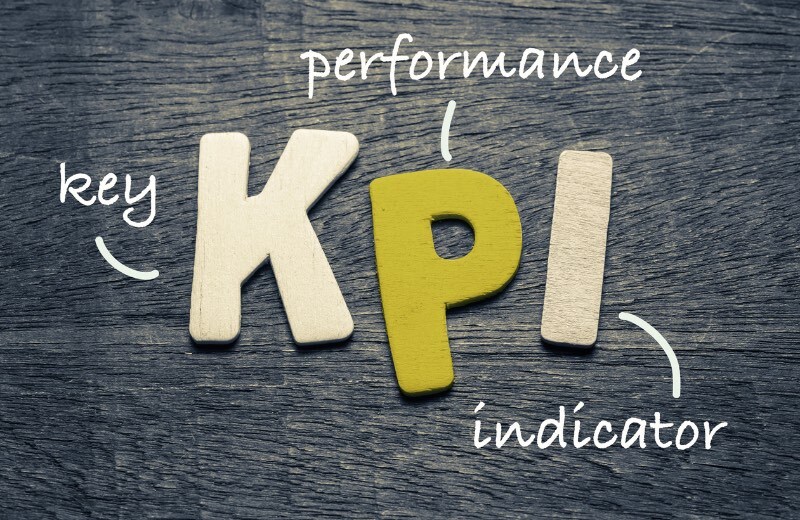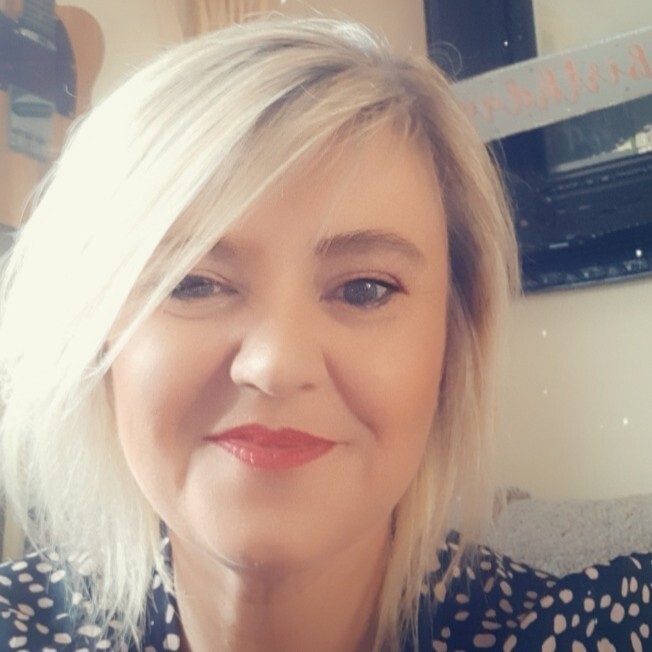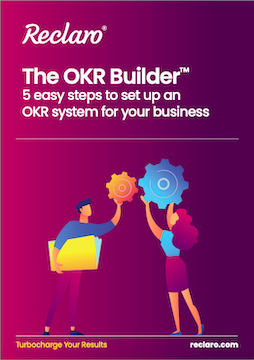
Last updated 24 March 2023 ·

Any business that wants to grow and stay competitive in its industry must have goals. Choosing the correct targets and tactics to drive your goals forward can take time and effort. Setting your sights on something like “increase revenue” without a detailed and specific plan could create confusion and work against your stated goal. But if you can clarify strategic objectives, cascade them through your organisation, and track progress with easy-to-use tools, achieving your vision shifts from a matter of ‘if’ to a matter of ‘when’.
One of the simplest and most effective goal-setting frameworks for successful UK organisations is the OKR, objectives and key results framework. OKRs offer a structured and results-oriented approach to goal-setting that helps decision-makers define the company’s visions and distil this into focused, measurable objectives. Hundreds of the world’s leading organisations use this approach to grow their profits, and several academic studies explain why it works so well.
Here is everything we’ll cover in this in-depth guide:
- What research tells us about achieving big goals
- Examining what OKRs look like in practice
- Four reasons to get excited about an OKR initiative
- Alignment and collaboration
- Motivated and inspired employees
- Clarity across the organisation
- Performance management
- OKRs vs KPIs: How are they different?
- Why are OKRs superior to other goal-setting frameworks?
- SMART Goals vs OKRs
- FAST Goals vs OKRs
- WOOP Goals vs OKRs
- 4DX Goals vs OKRs
- Balanced Scorecards vs OKRs
- OKR transitions: a series of perks
- Rolling out objectives
- Finalising key results
- Sharing updates on progress
- Smaller, team-specific OKRs
- Maintaining OKR momentum and excitement
- Demonstrating value
- How OKRs help executives in the C-suite
- OKRs are a critical tool for managers and supervisors
- Why new hires and frontline employees love OKRs
- Which types of businesses are best suited for OKRs
- Educational teams that value collaboration
- Retail organisations trying to motivate employees
- Hospitality businesses that want to measure what matters
- Construction companies hoping to boost productivity
- How to successfully embed OKRs into your corporate culture using a tracking tool

What research tells us about achieving big goals
A lot of work has gone into figuring out how to hack human psychology to reach new levels of productivity and efficiency. On the one hand, working toward big and ambitious goals (referred to as stretch goals) can be incredibly motivating. On the other hand, you don’t need a fancy study to tell you that falling short of a lofty goal can negatively affect an organisation.
So what’s the middle ground?
For starters, breaking stretch goals down into smaller milestones ensures that staff feel a sense of progress (which researchers have shown increases motivation, productivity, and commitment to company visions), even if they eventually fall short of the intended outcome.
Another essential ingredient for success is putting objectives and milestones in writing. Studies suggest that writing goals increase the likelihood of achieving them. Gathering people to discuss and clarify the company vision encourages them to think long and hard about what it would take to get there.
By putting company goals in writing and sharing them, accountability, alignment, and cross-team collaboration become far more straightforward. If C-suite leaders want to leverage current understandings of organisational psychology to realise industry-leading results, executives should employ a mixture of grounded and grandiose goals supported by a well-documented and constantly updated plan for accomplishing them. Currently, OKR initiatives are the most effective framework for doing exactly that.
Examining what OKRs look like in practice
As one of the most uncomplicated frameworks for organisational goals, OKRs help leaders clarify long-term aspirations and create guardrails that ensure managers and employees stay focused on the company’s ‘North Star’. The framework was first developed in the 1970s by former Intel CEO Andy Grove and has since been popularised by leading organisations like Microsoft, Google, and Twitter.
OKR initiatives are built around two main elements: Objectives and Key Results. Objectives are clear, timebound statements outlining what an organisation, executive, manager, or employee wants to accomplish. Key Results describe specific, measurable outcomes that demonstrate progress toward the objective. This approach is how Netflix turned an audacious, vague vision (“to entertain the world”) into a media machine driven by over 12,000 highly efficient employees.
Its adaptability is a large part of what makes the OKR framework so valuable. It works for companies of size, industry, and location. It’s commonly applied to quarterly and annual planning cycles but works just fine with shorter timeframes. Updating or revising your OKR initiatives to reflect changes in business priorities or market conditions is easy.
Here is a real-world example:
Vision: To be the most sustainable auto parts manufacturer in the UK.
Objective: Reduce our plant’s carbon footprint by 20% within five years
Key Result 1: Increase the use of recycled materials during production by 50%
Key Result 2: Convert all our facilities to 100% renewable energy sources
Key Result 3: Enrol 50% of employees in a company ride-sharing and bussing programme.
Since Andy Grove released the framework, people have created countless variations, modifications, and systems. No central authority dictates the best way to write and roll out OKRs. After more than a decade spent helping UK organisations define, pursue, and achieve their goals, we’ve found that a narrow and focused plan like the 1-3-5® OKR methodology is the most effective approach.
Four reasons to get excited about an OKR initiative
The primary purpose of any goal-setting framework is to bring an individual or organisation closer to an ideal outcome. Some of the more basic frameworks, which we’ll cover in the next section, do little more than help clarify a goal and keep it top of mind. OKRs do much more than that. Some of the key benefits include:
Alignment and collaboration
Setting clear objectives puts everyone on the same page and ensures their efforts contribute towards a common goal. OKRs clearly communicate which strategic objectives to pursue so teams don’t waste their time on activities that don’t align with the company’s priorities. In other words, OKRs create a sense of unity and shared purpose across all levels of your organisation, which is critical to driving growth.
Motivated and inspired employees
By establishing metrics for success and tracking progress against those metrics, individuals and teams can check on how their work is contributing to the organisation at any time. This promotes a sense of ownership and responsibility for specific objectives, which leads to higher engagement and motivation to perform well.
Clarity across the organisation
Most OKR experts recommend that employees, managers, and executives provide regular updates on their key results. This makes it a piece of cake to quickly identify issues or roadblocks preventing progress and then address them before they become more significant problems - especially if you’re using an OKR tracking tool that is updated in real-time.
Performance management
When everyone can see who is responsible for specific objectives and how close they are to achieving them, a culture of accountability evolves naturally. OKRs clearly outline the company’s expectations, making it easy to identify top performers and those lagging behind. This enables everyone – not just managers – to hold their colleagues accountable for their output, whether through recognition and celebration of achievements or constructive feedback, coaching and development to help individuals improve.
It’s important to note that the benefits of OKRs are the product of the framework’s focus on goal-setting and creating a plan for getting where you want to go. Because frameworks that don’t inform the planning process don’t deliver the same results.

OKRs vs KPIs: How are they different?
Key performance indicators (KPIs) are another popular method of measuring business performance. They are similar to OKRs. They serve different purposes.
KPIs are great when managers and leaders need a simple way to measure success and make data-driven decisions. For example, KPIs like slow ticket resolution times and disappointing customer satisfaction scores might indicate that your support team needs more training. One of the most significant issues with KPIs is that they are often used to measure standalone indicators that show you something that has already gone wrong. Sometimes this is called a lag measure.
On the other hand, OKRs help to break down broader outcomes and big-picture goals into key results that you have direct control over. If your objective is to launch an eCommerce website that generates 1,000 orders per month, you might measure how many product listings you add each week. OKRs are a crucial goal-setting framework for aligning teams and individuals with overall business goals and can help to drive focus, motivation, and innovation.
Rather than approaching the issue as KPIs vs OKRs, consider thinking about how you can combine the two for the best results. OKRs outline the overarching objectives of the business, while KPIs can help you keep tabs on whether your results and outcomes match your expectations. This approach allows for more holistic goal setting, as both qualitative and quantitative targets are considered.
Why are OKRs superior to other goal-setting frameworks?
OKRs are merely one of the many goal-setting frameworks available to UK organisations. Other popular methods for setting goals and measuring performance include SMART goals, WOOP goals, 4DX, and Balanced Scorecards. While each has pros and cons, prioritising the Objectives and Key Results approach yields the best results.
SMART Goals vs OKRs
SMART is an acronym for creating goals that are Specific, Measurable, Achievable, Realistic and Timely. It became popular around the same time as OKRs and is meant to move away from vague aspirations and toward more detailed and worthwhile goals. SMART goals help organisations focus on “what” they want to achieve but say nothing about “how” to get there. With OKRs, the plan is as, if not more important than, the destination.
FAST Goals vs OKRs
Similar to SMART goals, the FAST framework attempts to boil down the most important aspects of goal setting into a memorable acronym: Frequently discussed, Ambitious, Specific, and Transparent. It’s a relatively new technique that puts more focus on collaborative and organisational goals than the SMART approach. But FAST goals also lack the long-term direction regarding the path to success. They focus more on the importance of the process, keeping goals front and centre of everyone’s mind, than the bigger picture. OKRs provide an easy-to-follow formula for breaking big goals down into manageable milestones.
WOOP Goals vs OKRs
Another popular goal-setting acronym is Wish, Outcome, Obstacle, Plan, or WOOP. Unlike SMART goals, this approach does include planning. It’s just time-consuming and inefficient. When creating a WOOP plan, you are supposed to write down every imaginable obstacle that might stand in the way of your ideal outcome. It’s not just tricky, it’s impossible. OKRs rightly prioritise the creation of key results over the search for near-infinite possible roadblocks.
4DX Goals vs OKRs
The Four Disciplines of Execution (4DX) is a system for going after ambitious goals by focusing on a few key objectives and executing them with discipline. At first, the so-called four disciplines sound like OKRs: Focus on the Wildly Important, Act on Lead Measures, Keep a Compelling Scoreboard, and Create a Cadence of Accountability. 4DX is excellent for individual or short-term goals. Still, it’s too rigid and narrowly focused to outperform OKRs in a corporate or enterprise setting.
If your sales goals qualify as ‘wildly important’ does that mean neglecting your support team? How do you cascade 4DX methods from the C-suite all the way down to frontline staff? It just can’t hold a candle to OKRs.
Balanced Scorecards vs OKRs
This framework helps organisations align strategic objectives with operational activities by focusing on four key areas: financial, customer, internal business processes, and learning and growth. Like 4DX, the Achilles heel of Balanced Scorecards is its need for more flexibility and alignment. For example, financial goals like raising net profit may be at odds with customer-centric goals like satisfaction ratings. With OKRs, the long-term vision is at the top of the pyramid, mediating conflicting priorities, teams, and projects.
All five OKR “alternatives” have the same fundamental drawback: they aren’t well suited for setting high-level goals and keeping groups of people focused on them. Following the OKR route helps you accomplish this without overcomplicating or micromanaging how you track progress.
OKR transitions: a series of perks
The first step in the OKR process is to define the company’s vision. This is the most crucial step in any OKR transition because everything that follows must align with that vision. Whether it’s a collaborative effort that incorporates managers and individual employees or comes straight from the CEO or founder, the end product should be a short, inspirational statement that gives everyone purpose and direction.
Rolling out objectives
Once the vision statement is finalised and shared with the entire organisation, it’s time to draw up a small handful of objectives that further your vision. In our years of experience, we’ve landed on three objectives as the perfect balance between putting all your eggs in one basket and spreading your efforts too thin.
Finalising key results
Once your OKR decision-makers have settled on three worthwhile objectives, the next step is to engage with relevant department heads and managers to define key results that will significantly impact those objectives and, ultimately, the company vision. Here, we’ve found that five key results per objective are the magic number. Each KR should follow the SMART or FAST goal framework and focus on high-level efforts.
Sharing updates on progress
At this point, you should start providing regular updates on progress. Ideally, you’ll have an internal dashboard where every employee can see the latest updates on company OKRs. On top of that, key results should be the primary focus of every meeting led by someone whose title begins with ‘Chief’. You want every single employee to make it a habit to think about the company vision and OKRs daily. That’ll make the next step significantly easier.
Smaller, team-specific OKRs
You’ve got one company-wide vision supported by three big-picture objectives, each progressing based on five measurable, timebound key results. Now what? If your organisation employs more than 100 people, this is the point in the transition when you’ll start delegating or ‘cascading’ OKRs to relevant managers and stakeholders.
Remember our earlier example of the sustainable auto parts manufacturer with a KR to Enrol 50% of employees in a company ride-sharing and bussing programme? An HR manager might take that KR and make it into their own personal objective with five supporting key results that are delegated to HR employees further down the org chart.
Maintaining OKR momentum and excitement
Within a month of cascading OKRs throughout the organisation, every employee should be able to recite company, team, and personal OKRs from memory. They should know the date of the next quarterly update on progress. They should glance at the company OKR dashboard every morning to check their progress alongside others in the business. They should base all their meaningful workplace decisions around the question, “How will this contribute to the company vision?”
Demonstrating value
The transition might take anywhere from a few weeks to a few months, depending on the complexity of your organisation. But once you’ve got the ball rolling, it’s essential to obsessively refer to, talk about, and update company OKRs. Around the one-year mark, consider holding a Then vs Now meeting to show how far everyone has come and celebrate success with suitable rewards and recognition.

How OKRs help executives in the C-suite
The objectives and key results framework is invaluable for CEOs, managing directors, and COOs as it helps them keep the company moving in the right direction. By breaking down company-wide OKRs into departmental, team-specific, and individual goals, everyone in the organisation is always aligned and working towards the same objectives.
One of the most significant advantages of using the OKR framework is that it allows executives to remain focused on the big picture. At the same time, managers and their subordinates handle the day-to-day details. Senior leaders can concentrate on strategic planning, while middle management can focus on implementing the plan at the operational level. It’s an incredibly straightforward system for those in the C-suite – especially when they add software into the mix.
A centralised and technology-driven system for documenting and tracking OKRs (e.g. OKR software) supercharges the entire process. Executives can track progress in real-time, automate data collection, and quickly identify areas where improvement may be required. This, in turn, enables organisations to make informed decisions, fine-tune objectives and key results as needed, and keep everyone accountable for their contributions to the company’s vision.
Moreover, OKRs can facilitate communication and collaboration across different teams, departments, and geographies. By sharing the company OKR dashboard, everyone can instantly see how their goals align with the organisation’s broader objectives. This fosters a sense of transparency and encourages employees to work together towards a common goal.
Wondering what you should talk about during the next all-hands meeting? Put the company OKR dashboard on the big screen and discuss how each objective and key result is progressing. Not sure if you should give a department head a raise? See how much their team has contributed to the company vision compared to other department heads. And, of course, make sure that middle management benefits from implementation just as much as executives do.
OKRs are a critical tool for managers and supervisors
In addition to providing a clear framework for employee evaluation and performance, the OKR approach also helps managers identify areas for improvement within their team. By tracking progress toward specific goals and regularly reviewing performance metrics, managers can quickly and easily reveal areas where employees need additional training or support. This information can then be used to create targeted professional development plans that help employees grow in their roles and improve their overall performance.
On the employee engagement front, the OKR framework fosters a culture of continuous improvement. By setting ambitious yet achievable goals and regularly tracking progress toward them, employees are encouraged to continually strive for excellence and to seek out new and innovative ways of achieving success. This approach to your “people strategy” gives staff a say in how they spend their time at work, encouraging employees to be more engaged, motivated, and innovative.
And as a bonus, employees gain a greater sense of purpose and meaning in their work from working together to achieve shared objectives. This collaboration can lead to higher levels of job satisfaction, increased engagement, and a stronger sense of camaraderie and teamwork among colleagues. Finally, the OKR framework helps managers keep their team’s goals and objectives aligned with the organisation’s broader goals.
Why new hires and frontline employees love OKRs
For employees and team members who have their sights set on raises and promotions, black-and-white goals and crystal-clear definitions of success are enormously helpful. With well-defined objectives and key results in place, employees can identify their strengths and weaknesses at a glance and take proactive steps to improve their skills and knowledge. Employees are given a clear roadmap daily for making tangible headway toward their career ambitions and aspirations.
The OKR framework also helps employees build better relationships with colleagues and bosses. By promoting transparency and communication, OKRs encourage individuals to share their progress and seek feedback from others. This leads to a more collaborative and supportive work environment where employees feel valued and supported in their efforts to achieve their goals.
In some cases, the benefits of OKRs for individual workers extend beyond the office walls. When employees have a sense of purpose and direction in their work, they are more likely to feel fulfilled and satisfied in their personal lives. Setting clear goals and tracking progress towards them promotes a sense of accomplishment and pride in their work that spills over into other areas of their lives, increasing overall well-being and happiness.
Take, for example, Jordan Shrieve’s experience joining Neutronic Technologies around the time they started using the 1-3-5® OKR planning methodology:
“One of the things that I like most about Reclaro’s OKR software is…I can create a personal plan as well as my work plan…to improve my health and well-being. In this section, I include things like my exercise, social, reading list and further development such as completing Mental Health First Aid Training…it’s definitely helping me be the best I can be in all areas of my life.”
When checking in on personal and professional development is as easy as glancing at a dashboard before starting the day, employees feel more invested in their work and are more likely to cultivate new habits and skills.
Which types of businesses are best suited for OKRs
Many people look at the exponential growth of multinational tech companies and wonder, “Well, sure, OKRs helped them succeed, but will that same approach work for a smaller organisation like mine? Do OKRs work for every size and type of business?” They do (as long as you avoid the most common mistakes)! Here are some examples of OKR initiatives that successful companies use to ensure they get the most out of OKRs:
Educational teams that value collaboration
Schools, universities, and training facilitators tend to be relatively “flat” organisations, with each teacher or trainer responsible for their own success. Educational institutions and businesses with an “OKR champion” to get everyone on the same page and working toward unified implementation far outpace their divided counterparts.
Retail organisations trying to motivate employees
When staff feel like their job involves little more than clocking in and out, and waiting for the next paycheck, no amount of employee discounts or freebies will turn things around. Retailers (brick-and-mortar and online vendors) that take the time to craft exhilarating visions of their future lead the pack in everything from customer satisfaction to year-over-year growth.
Hospitality businesses that want to measure what matters
Whether you manage a food and beverage company or a five-star hotel, your customers’ interpersonal interactions with staff can make or break the business. By prioritising efforts to measure, track, and improve the health of your team’s relationships with customers, OKRs are sure to increase your profits.
Construction companies hoping to boost productivity
When you’re a contractor, it seems like there’s a never-ending stream of unavoidable setbacks, ranging from labour shortages to abrupt regulatory changes. But construction businesses that build, analyse, revise, and iterate their workflows through the lens of the OKR framework create efficient and dependable revenue pipelines.
This is not a comprehensive list. Businesses in every industry have used OKRs to clarify their goals and outline their plans. Ultimately, it’s about implementing a consistent, easy-to-understand system so everyone can quickly evaluate which efforts generate the most value and eliminate distractions.
If your company needs help with alignment, prioritisation, or motivation, an OKR initiative is guaranteed to improve the situation. And if you employ over 100 people, OKR software will drastically enhance adoption and adherence.

How to successfully embed OKRs into your corporate culture using a tracking tool
You could monitor and update OKR progress in a general-purpose project management app or a spreadsheet, but that comes with a laundry list of issues. Software built from the ground up to share company objectives, keep tabs on progress, and align team efforts is the most effective way to ensure your OKR initiative succeeds.
Notably, advanced tracking tools help organisations scale their OKR programme in the wake of growth. HR teams can train new hires on how to use the software on day one, giving them an immediate understanding of the organisation’s goals and objectives. This level of efficiency drastically simplifies the process of onboarding and training new hires during periods of rapid growth that are common among OKR adopters.
To learn more, check out our free Buyer’s Guide to OKR Software or if you’d like to discuss how Reclaro can help you cascade OKRs seamlessly throughout your organisation for increased productivity and faster growth, book a no-obligation 15-Minute discovery call.
In the words of Andy Grove himself, “Not all problems have a technological answer, but when they do, that is the more lasting solution.”





